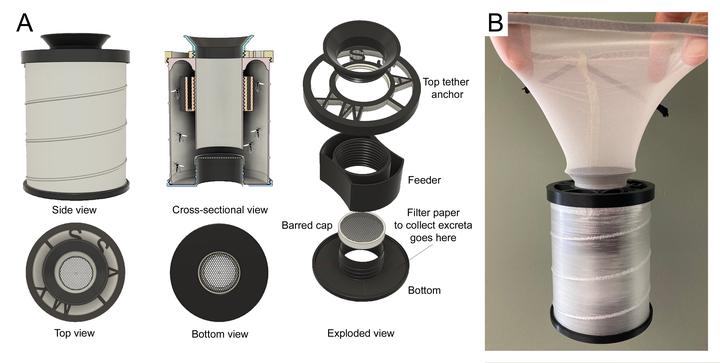Mosquito-borne virus surveillance using xenomonitoring methods based on trapped mosquito excreta

The detection of virus genomic RNA in insect vectors trapped in the field can provide a non-invasive mean for monitoring the presence of mosquito-borne pathogens that can affect human health. This strategy, sometime referred to as xenomonitoring, can be implemented (i) in areas where disease diagnostic on humans cannot be achieved or accessed, (ii) in wild places to survey vector-borne pathogen transmission without having access to the vertebrate hosts, or (iii) to improve transmission surveillance for pathogens that can cause asymptomatic infections in humans. A surveillance system based on the detection of pathogen genomic material in mosquito excreta have been recently developed by Australian colleagues (https://www.ncbi.nlm.nih.gov/pubmed/30945738, https://www.ncbi.nlm.nih.gov/pubmed/30169512) based on our findings that DENV genomic RNA could be detected in high quantity in mosquito excreta (https://www.ncbi.nlm.nih.gov/pubmed/27117953). This system is time and cost effective as compared to the standard method that relies on processing thousands of individual mosquitoes and thus offer the opportunity to screen virus transmission in wider and wilder areas.
This method Molecular Xenomonitoring (MX) method allows real-time surveillance of West Nile and Usutu virus in mosquito populations in Nouvelle Aquitaine region (France) in 2023 through the deployment of modified BG-sentinel traps (https://journals.plos.org/plosntds/article?id=10.1371/journal.pntd.0012754).
You can find here the 3D .obj files to print the latest version of the Mosquito Box. This is un updated version from the one used in 2023 with less items. It succeeded to detected WNV in 2024 and DENV in the French Caribbean in Oct 2023.
This is the body of the Mosquito Box. It can be printed in vase mode (the hotted never stop), one at a time. Here are the options I am using on my slicer for this item:
layer_height = 0.12
magic_spiralize =True
support_enable = False
support_type = everywhere
bottom_thickness = 0
initial_layer_line_width = 200.0
adhesion_type = brim
line_width = 0.9
top_thickness = 0
I am now printing this part in transparent PETG (more transparent than transparent PLA and more resistant to heat). Here are the options in the Cura slicer:




This is the bottom of the Mosquito Box. It can be screwed to the body. Use the standard parameters propose by your slicer for this item.
layer_height = 0.2
support_enable = False
initial_layer_line_width = 200.0

This is the feeder inside the Mosquito Box. It can be placed inside the body. Use the standard parameters propose by your slicer for this item.
layer_height = 0.2
support_enable = False
adhesion_type = brim
initial_layer_line_width = 200.0

This is the grid that can be screwed to the top of the bottom part inside the Mosquito Box. Use the standard parameters propose by your slicer for this item.
layer_height = 0.1
support_enable = False
adhesion_type = brim
initial_layer_line_width = 200.0
Alternatively, you can use this second item composed of two rings. Place a pre-cut square of mosquito net on the top of the biggest one and clip the other ring inside. You will have one item that can be screwed at the same place than item from File 4. The mosquito net is more efficient than 3D printed part to avoid insect escape while letting the air flow go through.

This is the top part of the Mosquito Box. It can be screwed to the body. Use the standard parameters propose by your slicer for this item.
layer_height = 0.2
support_enable = False
initial_layer_line_width = 200.0

This is the upper screw of the Mosquito Box. It can be screwed to the Top part. Use the standard parameters propose by your slicer for this item.
layer_height = 0.2
support_enable = False
initial_layer_line_width = 200.0

Please find here MX protocols: